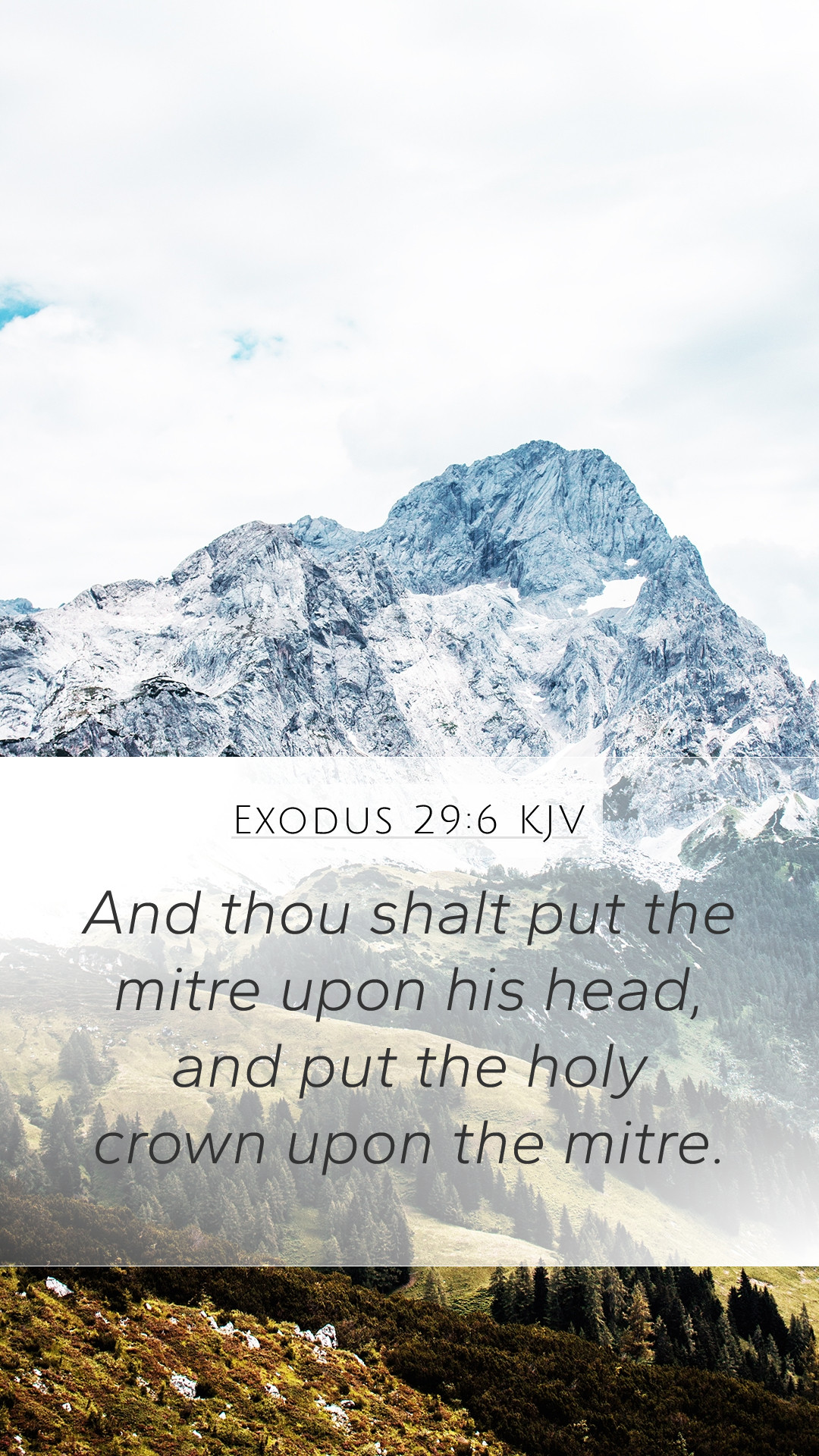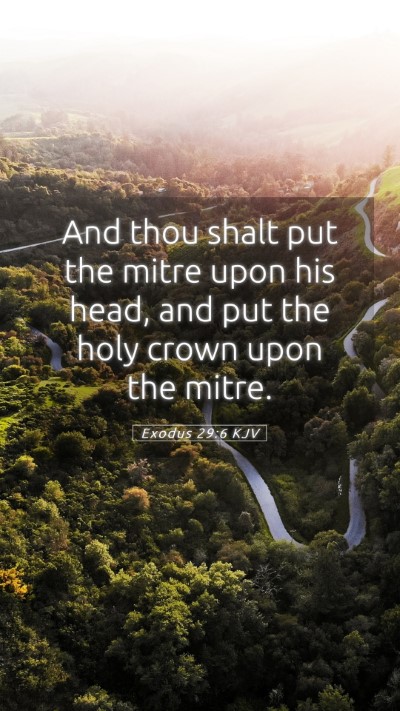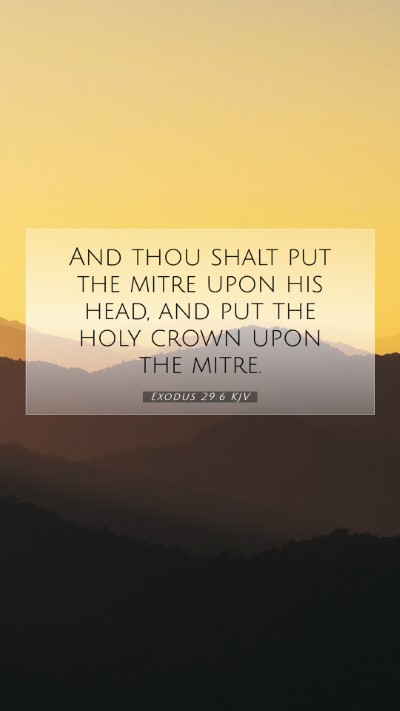Understanding Exodus 29:6
Exodus 29:6 (KJV): "And thou shalt put the mitre upon his head, and put the holy crown upon the mitre."
This verse describes a significant moment during the consecration of Aaron and his sons as priests. It highlights the importance of the ceremonial garments, specifically the mitre and the holy crown, which symbolize their set apart status for God's service.
Meaning of Exodus 29:6
- Priestly Role: The mitre (or turban) is a critical piece of the priest's attire, representing their office and duty before God. The act of placing the mitre on Aaron’s head signifies that he is being officially appointed as the high priest.
- The Holy Crown: The holy crown signifies purity and holiness. By placing it on the mitre, it emphasizes Aaron's role as a mediator between God and the people, highlighting the divine authority and responsibility resting upon him.
- Symbolism of Authority: The act of donning these garments is not merely a formality; it symbolizes the spiritual authority and sacred responsibility the priests hold as they serve in the Tabernacle.
Bible Verse Interpretations
This verse can be interpreted on multiple levels:
- Historical Context: Understanding the historical context of Exodus allows readers to grasp the significance of the priesthood in ancient Israel, which was central to their worship and relationship with God.
- Theological Implication: The attire of the high priest can be viewed as foreshadowing the ultimate priesthood of Jesus Christ, who fulfills and transcends the Old Testament priesthood.
- Cultural Significance: The meticulous details of priestly garments reflect the importance of holiness and reverence in worship practices during the Israelites' covenant with God.
Bible Study Insights
When exploring Exodus 29:6, consider the following insights:
- Symbol of Separation: The mitre and crown mark a clear distinction between the sacred and secular, reinforcing that priestly duties are regarded as holy.
- Importance of Obedience: Aaron's acceptance of this responsibility demonstrates the necessity of obedience to God's commands in serving Him.
- Role of Priesthood: This verse underscores the importance of the priestly role in interceding for the people, a theme prevalent throughout the Bible.
Commentary on Exodus 29:6
Using various public domain commentaries, the following interpretations and explanations emerge:
- Matthew Henry: Henry emphasizes that the putting on of the mitre signifies dignity and honor. He notes the importance of the priest bearing the names of the tribes of Israel on his breastplate, as it connects the priests directly with the people they serve.
- Albert Barnes: Barnes highlights that this ceremonial act is a depiction of the great truths of divine worship, illustrating that the priesthood requires not only physical adornments but also spiritual qualifications.
- Adam Clarke: Clarke discusses the implications of the holy crown, indicating it symbolizes the covenant between God and Israel, which the priests are called to uphold through their representative duties.
Application of Exodus 29:6
Readers can apply the principles found in this verse to modern life in the following ways:
- Priestly Calling: Just as Aaron was appointed as a priest, believers today are invited into a holy priesthood, serving God and others in various capacities.
- Living with Integrity: The symbolism of the priests' garments reminds us to live with integrity, as our actions represent our commitment to God's standards.
- Commitment to Holiness: As we serve in our respective callings, we should strive for holiness, setting ourselves apart for God's purposes much like the priests of old.
Cross References
Exodus 29:6 is related to several other biblical passages that enhance its meaning:
- Leviticus 8:7-9: Details the garments worn by the priests, emphasizing their significance.
- Hebrews 5:1: Discusses the role of priests in offering gifts and sacrifices, connecting back to the duties initiated here.
- 1 Peter 2:9: Describes believers as a chosen generation, emphasizing the priestly role of every Christian in the New Testament context.


